Topics
- National Mission on Biodiversity and Human Well-Being
- Child Labour: Global estimates 2020 | ILO
- Agriculture Exports
- Vehicle Scrappage Policy
- HIV/AIDS | UNGA Resolution 75/260
- Ram Prasad Bismil
- National Mission on Biodiversity and Human Well-Being
Context: Preserving biodiversity is directly relevant to the social, economic, and environmental well-being of our people.
About the Mission:
- The National Mission on Biodiversity and Human Well-Being is an ambitious initiative that aims to bring biodiversity and conservation to the forefront of Indian science, policy, and society’s attention.
- The Mission has been visualized to be as inclusive as possible, with components that involve scientific institutions, government agencies, and non-government organizations at the national, state, and local levels.
- The people who will power the Mission will include scientists, farmers, industrialists, students, policy makers, and citizens from all walks of life.
- It further aims to help India realize the United Nations Sustainable Development Goals by using India’s rich biodiversity to create solutions for challenges in agriculture, health, and climate change.
- Government is considering major investments in biodiversity science to meet societal needs.
- In 2018, the Prime Minister’s Science, Technology and Innovation Advisory Council (PM-STIAC) approved an ambitious National Mission on Biodiversity and Human Well-Being (NMBHWB).
Key features of National Mission on Biodiversity and Human Well-Being (NMBHWB):
- Sustainable Utilization: The Mission will strengthen the science of restoring, conserving, and sustainably utilising India’s natural heritage
- Integration in Development: The mission will embed biodiversity as a key consideration in all developmental programmes, particularly in agriculture, ecosystem services, health, bio-economy, and climate change mitigation;
- Database: It will establish a citizen and policy-oriented biodiversity information system
- Leadership role: The Mission will allow India to emerge as a leader in demonstrating linkage between conservation of natural assets and societal well-being.
- Solutions to create resilience: Mission programmes will offer nature-based solutions to numerous environmental challenges, including degradation of rivers, forests, and soils, and ongoing threats from climate change, with the goal of creating climate-resilient communities.
- Mission’s “One Health” programme, integrating human health with animal, plant, soil and environmental health, has both the preventive potential to curtail future pandemics along with the interventional capability for unexpected public health challenges.
Significance of Bio-Diversity Conservation:
- Repairing our dysfunctional relationship with nature is one of the ways to mitigate climate change and curtail future outbreaks of infectious diseases.
- Our biodiversity also serves as a perpetual source of spiritual enrichment, intimately linked to our physical and mental well-being.
- The precise economic value of all ecosystem services provided by biodiversity may not be known, estimates suggest our forests alone may yield services worth more than a trillion rupees per year.
- Imagine how much greater this value will be with grasslands, wetlands, freshwater, and marine added.
- Sadly, today, we face not only one of the worst public health crises but also worldwide declines in biodiversity.
- Globally, we have lost 7% intact forests since 2000, and recent assessments indicate that over a million species might be lost forever during the next several decades. Our country is not an exception to these trends.
Need for a dedicated cadre for NMBHWB:
- The planned Mission recognises that we need a strong and extensive cadre of human resources required to meet the enormous and complex environmental challenges of the 21st century.
- This will require training professionals of the highest calibre in sustainability and biodiversity science, along with an investment in civil society outreach.
- The gains of environmental change will be upheld and carried forward by the cultural change from environmental education for millions of students, from kindergarten to postgraduate levels.
Impact of the Mission:
- The mission can rejuvenate agricultural production systems and increase rural incomes from biodiversity-based agriculture while also creating millions of green jobs in restoration and nature tourism.
- The Mission can help India meet its commitments under the new framework for the Convention on Biological Diversity (CBD), and UN SDGs related to pressing social issues including poverty alleviation, justice and equity, and protection of life.
- Restoration activities across India’s degraded lands, which amount to almost a third of our land area, alone could generate several million jobs.
- Child Labour: Global estimates 2020 | ILO
Context: The report, ‘Child Labour: Global estimates 2020, trends and the road forward’ was recently released jointly by International Labour Organisation and UNICEF.
Highlights of the report:
- The latest global estimates indicate that 160 million children – 63 million girls and 97 million boys were in child labour globally at the beginning of 2020, accounting for almost 1 in 10 of all children worldwide
- There has been a significant rise in the number of children aged 5 to 11 years in child labour, who now account for just over half of the total global figure.
- The number of children aged 5 to 17 years in hazardous work has risen by 6.5 million to 79 million since 2016.
- In sub-Saharan Africa, population growth, recurrent crises, extreme poverty, and inadequate social protection measures have led to an additional 16.6 million children in child labour over the past four years.
- The agriculture sector accounts for 70 per cent of children in child labour (112 million) followed by 20 per cent in services (31.4 million) and 10 per cent in the industry (16.5 million).
- Nearly 28 per cent of children aged 5 to 11 years and 35 per cent of children aged 12 to 14 years in child labour are out of school.
- Child labour is more prevalent among boys than girls at every age. When household chores performed for 21 hours or more each week are taken into account, the gender gap in child labour narrows.
- The prevalence of child labour in rural areas (14 per cent) is close to three times higher than in urban areas (5 per cent).
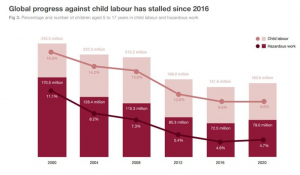
Impact of Covid19 Pandemic on Child Labour:
- The COVID-19 crisis threatens to further erode global progress against child labour unless urgent mitigation measures are taken.
- New analysis suggests a further 8.9 million children will be in child labour by the end of 2022 as a result of rising poverty driven by the pandemic.
- A simulation model shows this number could rise to 46 million if they don’t have access to critical social protection coverage.
- Children already in child labour may be working longer hours or under worsening conditions because of additional economic shocks and school closures caused by Covid-19.
- Many more may be forced into the worst forms of child labour due to job and income losses among vulnerable families.
- Covid-19 is endangering that progress even in regions where there has been some headway since 2016, such as Asia and the Pacific, and Latin America and the Caribbean.
Recommendations / Road Ahead:
- Expanded income support measures for families in situations of vulnerability, through child benefits and other means.
- Back-to-school campaigns.
- Stepped-up remedial learning to get children back in the classroom and help them make up for lost learning once there, when conditions permit.
- Ensuring free and good-quality schooling at least up to the minimum age for entering employment to provide a viable alternative to child labour.
- Guaranteeing that every child’s birth is registered so that children have a legal identity and can enjoy their rights from birth.
- Promoting adequate rural livelihoods and resilience, including through supporting economic diversification, investing in basic services infrastructure, extending social protection and devising agricultural extension.
- Ensuring that necessary laws and regulations are in place to protect children, backed by enforcement machinery and child protection systems, and the services required to apply them.
- Addressing gender norms and discrimination that increase child labour risks, particularly for girls, related to domestic work and unpaid household chores.
What is Child labour?
As per ILO, Child labour is defined as work that deprives children of their childhood, their potential and their dignity, and that is harmful to their physical and mental development.
It refers to work that is mentally, physically, socially or morally dangerous and harmful to children. Or the work schedule that interferes with their ability to attend regular school or work that affects in any manner their ability to focus during school or experience healthy childhood.
Child Labour in India:
- As per Census 2011, the total child population in India in the age group 5-14 years is 259.6 million.
- Among them, over 10 million (4% of total child population) are working either as ‘main worker’ or ‘marginal worker’.
- The Census data indicates the decreased incidence of child labour in India by 2.6 million between 2001 and 2011.
- Moreover, there is a greater decline in rural than in urban areas. This is because an increase in rural-to-urban migration is driving demand for child workers in urban areas.
Steps Taken:
- Ratification of International Labour Organisation convention 182 on worst forms of Child Labour and convention 138 on the minimum age of employment.
- Child Labour (Prohibition and regulation) Amendment Act,2016
- National Child Labour Project (NCLP) Scheme
- PENCiL (Platform for Effective Enforcement for no Child Labour ) Portal
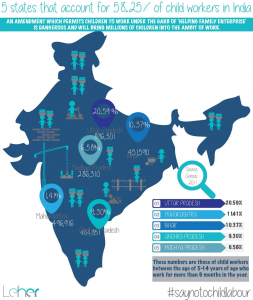
- Agriculture Exports
Context: India’s agriculture exports jump 17.34% to $41.25 billion in Financial Year 2021.
Key Details:
- After remaining stagnant for last 3 years, export of agriculture and allied products grew 17.34% to $41.25 billion.
- India is seeing growth in export of cereals, spices and organic products.
- First time exports from several clusters (vegetables and mangoes from Varanasi and Black rice from Chandauli )
- The largest markets for India’s agricultural products are the US, China, Bangladesh, the UAE, Vietnam, Saudi Arabia, Indonesia, Nepal, Iran, and Malaysia.
- Demand for more health products such millets, ginger turmeric, quinoa is rising.
- According to Agricultural and Processed Food Products Export Development Authority (APEDA) , there has been a rise in demand for organic products. Organic exports that include products such as cereals and millets, spices and condiments, tea, medicinal plant products, dry fruits, and sugar grew 51 per cent year on year to $1,040 million.
- The country also registered all-time-high exports of sugar ($2.79 billion), spices ($3.98 billion) and processed fruits & vegetables ($1.12 billion) in 2020-21.
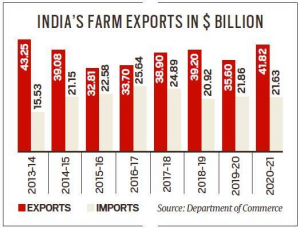
Reasons behind the growth:
- Good monsoon
- Opportunities presented by the Pandemic like steep surge in global commodity prices, increased demand for staples etc.
- It was also due to various programmes emanating from agriculture policy that came into effect in December 2018.
- 46 Unique product districts were identified for export promotion
- Many clusters and districts that were not exporting earlier have started doing it now.
- Country specific Agri-export strategy reports
- Agri cells at different Embassies of India
- Improved market access: For example, India recently gained market access for Pomegranate in Australia and carrot seeds in Iran.
- Adherence to European Union norms to for the export of Basmati Rice.
- Last year’s Agri-export boom was led by non-basmati rice, with a record 13.09 million tonnes valued at $4.80 billion exports.
- Together with 4.63 mt of basmati worth $4.02 billion, it has further consolidated India’s position as the world’s biggest rice exporter.
- GI Tag to domestic products for recognition in international markets

- Vehicle Scrappage Policy
Context: Union Finance and Corporate Affairs Minister Nirmala Sitharaman has called for expediting the implementation of the vehicle scrappage policy.
About the Vehicle Scrappage Policy:
- The vehicle scrappage policy was initially announced by the Finance Minister in the Union Budget 2021-22.
- The policy is estimated to cover 51 lakh Light Motor Vehicles (LMVs) that are above 20 years of age and another 34 lakh LMVs above 15 years of age.
- The aim of the policy is to create an ecosystem for flushing out from our roads old and unfit vehicles that cause pollution in order to reduce pollution. It also aims at improving road and vehicular safety in the country.
- It is also expected to give a fillip to the automobile industry, which was already down even before the COVID-19 pandemic.
- In the long run, the policy is expected to enhance the fuel efficiency of vehicles, augment the availability of low-cost raw materials for automotive, electronics and steel industries and increase the government’s Goods and Services Tax (GST) revenues. The scheme also seeks to formalise the currently informal vehicle scrapping industry.
Provisions of the Policy:
- Old vehicles will have to pass a fitness test before re-registration and as per the policy government commercial vehicles more than 15 years old and private vehicles which are over 20 years old will be scrapped.
- The policy will start with commercial vehicles first and then be expanded to private vehicles later.
- Old vehicles will be tested at the Automated Fitness Centres and the fitness test of the vehicles will be done in conformity with international standards.
- The vehicles will undergo emission testing, safety components’ testing, braking system tests, etc.
- The criteria for scrappage have been adapted from international best practices after a comparative study of standards from various countries like Germany, the UK, the USA and Japan.
- Automated fitness centres will be set up under PPP mode.
- To incentivize the scrapping of old vehicles, the policy proposes a lesser GST of 5% or a complete waiver on replaced commercial vehicles instead of 28% levied currently on commercial vehicles and on those carrying 10 or more persons.
- All government vehicles and those owned by PSUs will be de-registered after 15 years.
- The state governments may be advised to offer a road-tax rebate of up to 25% for personal vehicles and up to 15% for commercial vehicles to provide incentive to owners of old vehicles to scrap old and unfit vehicles
- They can also avail of a 5 per cent manufacturer discount against the scrapping certificate and also a waiver in the registration fee while buying new vehicles.
- The government will open vehicle scrapping centres to create an ecosystem for the policy to take off.
- Mandatory fitness testing for heavy commercial vehicles will start on April 1, 2023.
- For all other categories of vehicles, including personal vehicles, it will start in phases from June 1, 2024
Significance:
- It will lead to creation for more scrap yards in the country and effective recovery of waste from old vehicles.
- The scrapping of old vehicles can reduce the consumption of oil to the extent of 3.2 billion litres per year. This will help save nearly Rs 7,000 crore in oil import.
- In the new fitness centers, 35 thousand people will get employment and an investment of Rs 10,000 crores will be pumped in.
- This will boost sales of heavy and medium commercial vehicles that had been in the contraction zone as a result of economic slowdown triggered by the bankruptcy of IL&FS (Infrastructure Leasing & Financial Services) and Covid-19 pandemic.
- The policy is expected to increase the tax collection from the automobile industry to the tune of Rs.10000 crores.
- Prices of auto components would fall substantially with the recycling of metal and plastic parts.
- As scrapped materials will get cheaper the production cost of the vehicle manufacturers will also reduce.
- Old vehicles do not conform to the Bharat Stage Emissions norms VI and flushing them out of the roads will lead to reduced air pollution.
Issues with the new policy:
- Limited incentive and poor cost economics for trucks.
- Lack of addressable volumes for other segments.
- The potential benefit from scrapping a 15-year-old, entry-level small car will be ?70,000, whereas its resale value is around ?95,000. That makes scrapping unattractive.
Need of the hour:
- With this background, for the scrappage policy to be seamlessly implemented, we should have a comprehensive plan in terms of removing ELV (End of life vehicles) from the road. Freight transporters need stronger financial support. However, that said, it is important to note that unless old fleet vehicles are off the road, the benefits of implementation of BSVI vehicles will not be fully leveraged.
Other Initiatives to Curb Vehicular Pollution:
- Go Electric Campaign
- FAME India Scheme Phase II.
- Electric Vehicles (EV) Policy 2020 for Delhi.
- Hydrogen Fuel Cell Based Bus and Car Project.
- National Electric Mobility Mission 2020.
- HIV/AIDS | UNGA Resolution 75/260
Context: The Union Health Minister addressed the 75th session of the United Nations General Assembly (UNGA) on prevention of HIV/AIDS.
- The Resolution 75/260 of UNGA deals with the Implementation of the Declaration of Commitment on HIV/AIDS and the political declarations on HIV/AIDS.
Highlights of the Address:
- Health minister reiterated the need to achieve zero new transmission of HIV to end AIDS.
- India’s unique HIV prevention model is centred around the concept of ‘Social Contracting through which the ‘Targeted Interventions Program’ is implemented with support from civil society.
- The program is aimed at behaviour change, communication, outreach, service delivery, counselling & testing and ensuring linkages to HIV care.
- India is providing free anti-retro-viral treatment to close to 1.4 million people.
- India is also providing essential HIV drugs to people in Africa.
- India has Revised and Revamped its National AIDS Control Program to focus on hard-to-reach and at-risk populations.
- India is gradually transitioning the people living with HIV to Dolutegravir, a safer and efficacious anti-retro-viral medication regimen.
- The HIV & AIDS Prevention and Control Act, 2017, provides a legal and enabling framework to safeguard the human rights of infected and affected populations.
- The target of Elimination of Mother to Child Transmission of HIV: For this, viral load testing facilities have been scaled up, and HIV counselling, testing and community-based screening for early diagnosis have been ramped up.
India’s initiatives regarding elimination of AIDS:
- 90-90-90: 90% of those who are HIV positive in the country know their status, 90% of those who know their status are on treatment and 90% of those who are on treatment experience effective viral load suppression
- Project Sunrise initiative was launched by the Ministry of Health and Family Welfare in 2016, to tackle the rising HIV prevalence in north-eastern states in India, especially among people injecting drugs.
- The Red Ribbon: The red ribbon is the universal symbol of awareness and support for people living with HIV.
- Global Fund to Fight AIDS, Tuberculosis and Malaria (GFATM): The Global Fund is a 21st-century partnership organization designed to accelerate the end of AIDS, tuberculosis and malaria as epidemics.
Human Immunodeficiency Virus:
- Human Immunodeficiency Virus (HIV) is a lentivirus, which is a sub-classification of the retrovirus. It causes the HIV infection which over time leads to AIDS (Acquired Immunodeficiency Syndrome).
- AIDS is a deadly condition in which the affected person’s immune system fails, leading to the spread of life-threatening infections and cancers in his body.
- HIV demolishes a particular type of WBC (White Blood Cells) and the T-helper cells. This virus also makes copies of itself inside these cells.
- T-helper cells are also known as CD4 cells.
- The average survival period for a person affected with HIV without treatment is nine to eleven years, subject to the subtype of HIV.
- HIV infection can occur by the transference of blood, breast milk, vaginal fluid, semen, or pre-ejaculate.
- HIV occurs as both free virus particles and as a virus inside the infected immune cells within the above-mentioned bodily fluids.
- A weak immune system makes a person prone to opportunistic infections and cancer.
- It becomes difficult for a person infected with this virus to recover from even a minor injury or sickness.
- By receiving treatment, a severe form of HIV can be prevented.
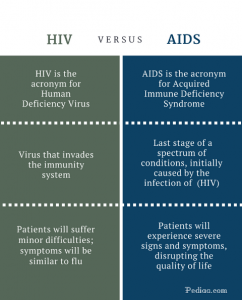
Anti-retro-viral therapy:
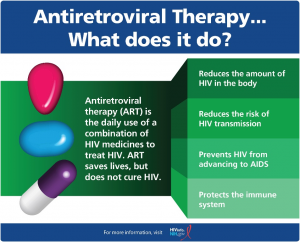
National AIDS Control Program:
- The National AIDS Control Organization (NACO) launched the first phase of the National AIDS Control Programme in (1992-1999).
- NACO is a division of the Ministry of Health and Family Welfare.
- It was constituted in 1992 to provide leadership to HIV/AIDS control programmes in India through 35 HIV/AIDS Prevention and Control Societies.
- Ram Prasad Bismil
Context: Recently, the Ministry of Culture organised a special ceremony at Shahjahanpur, Uttar Pradesh to mark the birth anniversary of freedom fighter Ram Prasad Bismil.
About Ram Prasad Bismil:
- He was born on 11th June, 1897, in a village in Uttar Pradesh.
- He was associated with the Arya Samaj from an early age.
- Arya Samaj had a profound influence on him, he often employed poetry as his weapon of choice in the fight against the imperialist forces.
- Bismil started writing powerful patriotic poems in Urdu and Hindi under the pen names of ‘Bismil’, ‘Ram’ and ‘Agyat’.
- The ideals of freedom and revolution got first ingrained in his mind after he read the death sentence passed on Bhai Parmanand, an Indian nationalist and Arya Samaj missionary. He gave vent to his anger in the form of his poem ‘Mera Janm’ when he was just 18 years old.
- He also translated English and Bengali works into Hindi.
- His ideals of freedom struggle stood in stark contrast to that of Mahatma Gandhi and he would reportedly say “independence would not be achieved by means of non-violence”.
- He formed organisation Matrivedi and Shivaji Samiti and got in touch with Genda Lal Dixit, a school teacher.
- Both shared revolutionary ideas and wanted to organise the youth of the country to fight the British government.
- After conflicting views and growing resentment with the Congress party, he formed the Hindustan Republic Association along with Sachindra Nath Sanyal and Jadugopal Mukherjee.
- HRA was founded in 1924 and its constitution was drafted chiefly by Bismil.
Major Cases:
- He was involved in the Mainpuri Conspiracy of 1918 in which police found a few young people including Bismil selling books that were not prescribed by the government.
- He published a pamphlet titled ‘Deshwasiyo ke Naam’ and distributed it along with his poem ‘Mainpuri ki Pratigya’ to collect funds for the parties, they also looted government coffers.
- He escaped arrest by jumping into the Yamuna River.
- Kakori Conspiracy Case:
- He was the mastermind behind the plan which was to loot a train carrying government money. The incident occurred on 9th August 1925 at Kakori, near Lucknow.
- Bismil, along with nine other revolutionaries stopped the train and looted the government treasury. The radicals used semi-automatic pistols for the plot. One passenger was accidentally killed in the incident which made it a murder case.
- Apart from Bismil, some of the others involved in the train robbery were Ashfaqulla Khan, Chandrasekhar Azad, Rajendra Lahiri, Manmathnath Gupta.
- The government came down heavily on the revolutionaries. Over 40 people were arrested in connection with the case although many were unrelated to it.
- The legal process lasted 18 months. Bismil, Lahiri, Khan and Thakur Roshan Singh were awarded death sentences.
- In Lucknow Central Jail, Bismil wrote his autobiography, considered as one of the finest works in Hindi literature and also the cult song “Mera rang de Basanti chola”.
- While lodged in Gorakhpur Central Jail, Bismil went on a hunger strike demanding to be treated as a political prisoner.
- Despite widespread outrage over the death sentences, and support from various Indian political leaders for the revolutionaries, the government did not budge.
- Bismil was hanged on 19th December 1927 at Gorakhpur Jail. He was just 30 years old.
